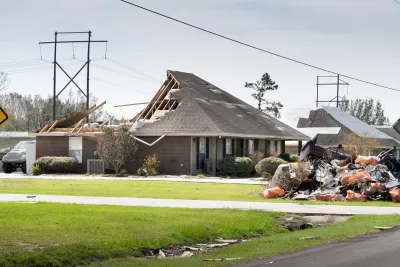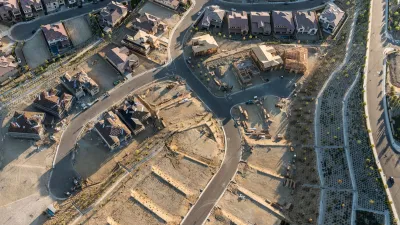As the frequency and severity of weather events increases, building codes need to be adjusted to include resilience principles.

In the face of rising disaster recovery costs and a looming property insurance crisis, Eleanor Kitzman, the founder of Resolute Underwriters, Inc., says it’s necessary to put in place stronger building codes that incorporate proven, affordable climate-resilient standards and dramatically scale up funding and incentives to help retrofit existing homes to be more resilient.
Last year, the U.S. saw the highest number of major disasters, 23 total, since the federal government started keeping records in 1980. In addition to the massive toll on human life and health, as well as the billions of dollars of related property damage and losses, these severe events are driving up insurance premiums and deductibles and leading to reduced coverage or insurance companies moving out of hard-hit areas altogether.
“The percent of uninsured homeowners has risen from 5% to 12% in just the last three years due to increasing costs,” Kitzman writes. “We can only fix this insurance crisis by fixing our underlying risk crisis. The majority of homes in the U.S. were built to codes that did not anticipate the rapidly increasing extreme weather we are experiencing today.”
She admits there is no one-size-fits-all solution, as risk mitigation is peril specific, but she highlights a few programs in the U.S. that are combining creative thinking, innovative funding, and collaborative effort to tackle the challenge:
- Alabama: The Strengthen Alabama Homes program, launched ten years ago, offers homeowners grants of up to $10,000 to install roofs that meets Fortified™ construction standard, with the aim of reducing losses from high winds, hail, tornadoes, hurricanes and other severe convective storms.
- Louisiana: A climate resilience grant from the Louisiana Office of Community Development and Louisiana Homes Corporation supported the development of 35 new homes built to Fortified standards, which were barely scratched when Hurricane Ida made landfall in August 2021, despite catastrophic damage elsewhere along the nearby coast.
North Carolina and South Carolina also have Fortified roof grant programs and last year, and Louisiana created a grant program modeled on Alabama’s SAH program. Kitzman says other states are considering similar programs.
“Stabilizing insurance markets starts with strengthening homes, families and communities. We know what needs to be done, and we need to do it now,” Kitzman says.
FULL STORY: Climate resilient construction helps mitigate disasters

Trump Administration Could Effectively End Housing Voucher Program
Federal officials are eyeing major cuts to the Section 8 program that helps millions of low-income households pay rent.

Planetizen Federal Action Tracker
A weekly monitor of how Trump’s orders and actions are impacting planners and planning in America.

The 120 Year Old Tiny Home Villages That Sheltered San Francisco’s Earthquake Refugees
More than a century ago, San Francisco mobilized to house thousands of residents displaced by the 1906 earthquake. Could their strategy offer a model for the present?

HSR Reaches Key Settlement in Northern California City
The state’s high-speed rail authority reached an agreement with Millbrae, a key city on the train’s proposed route to San Francisco.

Washington State Legislature Passes Parking Reform Bill
A bill that would limit parking requirements for new developments is headed to the governor’s desk.

Missouri Law Would Ban Protections for Housing Voucher Users
A state law seeks to overturn source-of-income discrimination bans passed by several Missouri cities.
Urban Design for Planners 1: Software Tools
This six-course series explores essential urban design concepts using open source software and equips planners with the tools they need to participate fully in the urban design process.
Planning for Universal Design
Learn the tools for implementing Universal Design in planning regulations.
Ada County Highway District
Clanton & Associates, Inc.
Jessamine County Fiscal Court
Institute for Housing and Urban Development Studies (IHS)
City of Grandview
Harvard GSD Executive Education
Toledo-Lucas County Plan Commissions
Salt Lake City
NYU Wagner Graduate School of Public Service





























